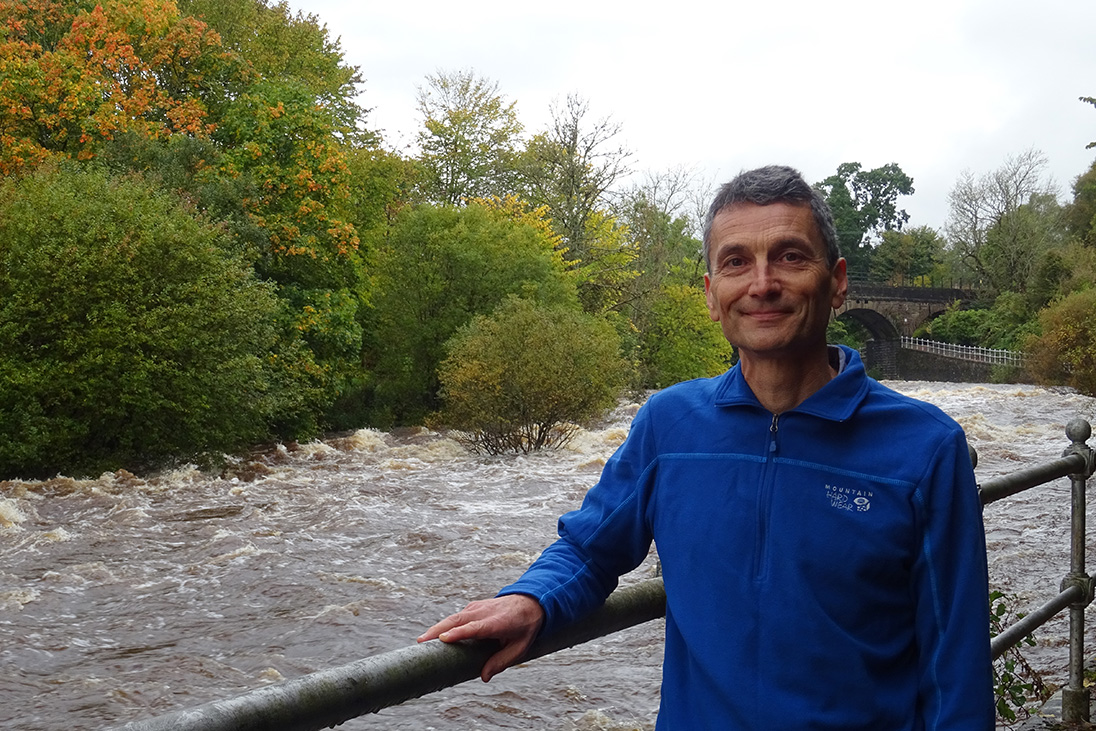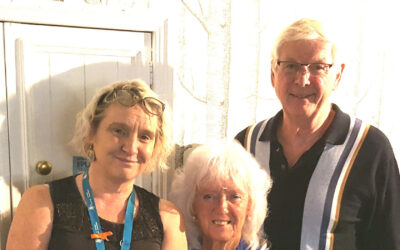Have you ever wondered why it seems difficult to lead a low carbon and sustainable lifestyle?
In my view, society and our current economics are stacked against it, perhaps not deliberately, but through historical practice and good intentions that today don’t help to tackle our climate crisis.
Trying to ‘be green’ can be expensive, difficult and in many cases, you need to be strong to act against peer pressure.
For example, buying an electric car is still expensive, choosing an electronic gadget that will last 10 years is difficult and following a vegan diet requires a real effort to stand up to societal peer pressure.
Not many of us will choose the self-sacrifice of not owning a car, buying an expensive heat pump, or choosing not to fly abroad on holiday.
But governments can incentivise businesses and individuals to innovate and invest in better options. They could tax ‘natural’ gas, and use the income raised to subsidise people to install heat pumps. All of this is possible, but it needs the right regulatory and financial conditions – which are simply not in place at present.
So, we need to make it easy for businesses to offer consumers green choices, and for this to be the default decision when we buy products. Only in this way will we get the majority of consumers to make sustainable decisions, rather than the minority at present.


Neil Kitching
The Ten Building Blocks
- Think long-term. In the UK we live in a society dominated by periodic democratic elections. Our politicians are not good at planning 10 years ahead and sometimes they react to events on a weekly basis! It would be better if climate action was less political, as in Denmark where all political parties support the long-term policy and actions to decarbonise. One rare example of long-term thinking in the UK is the ban on the sale of new petrol and diesel cars from 2030. This gives manufacturers time to design and manufacture electric cars and for the necessary charging infrastructure to be installed.
- Governments need to ‘tax the bad‘, and ‘subsidise the good‘. Price signals are one of the most effective means to encourage sustainable purchasing. The plastic bag charge of 5p resulted in a 90% reduction in the manufacture, use, and disposal of single-use plastic bags. The levy on fizzy drinks resulted in many manufacturers reformulating their recipes to reduce the sugar content so the health benefits were realised with little impact on the consumer. So, sensible taxes can be designed to ‘nudge’ our behaviour, for example towards electric cars or healthier foods.
- Governments need to introduce sensible regulations on businesses. Regulations that create a level playing field but encourage innovation and long-term investment. Energy efficiency labels on large household appliances encouraged manufacturers to design and sell far more efficient fridges and freezers which benefitted consumers and the environment. We need a wide range of new regulations including bans on products that have a disproportionate impact on the environment such as plastic disposable wipes or helium-filled balloons. Why not have compulsory 10-year guarantees on the sale of key products? If a washing machine came with a long guarantee, then the manufacturer would ensure it was built to a high-quality standard and was easily repairable. Even if we had to pay slightly more to buy it initially, it would be worth it as it would benefit us and the environment. Moves are being made in this direction with the recent ‘right to repair’ legislation that forces manufacturers to provide spare parts to extend the life of their products.
- Businesses need to think about good design. Products should be manufactured efficiently, using as few resources as possible, they should be built to high-quality standards, they should be energy efficient to operate and they should be easy to repair and recycle. Governments may need to regulate to encourage this. Good design also applies to the places where we live – our buildings, our streets, our urban open spaces. Cities should be designed for people and communities, not for cars. Children should be able to walk safely to school.
We need to make it easy for businesses to offer consumers green choices, and for this to be the default decision when we buy products.”
- Governments and businesses should target expenditure on innovation for a more sustainable future. Batteries, hydrogen technology, carbon capture and storage, more efficient solar panels, lighter materials, crops that can grow with fewer fertilisers….a never-ending list. Innovation has already been incredibly successful in bringing down the price of solar panels whilst battery storage has improved which is increasing the range of electric cars.
- Similarly, governments and businesses should invest in infrastructure for a more sustainable future. Electric car charging points, energy efficient streetlights, electric buses and trains, cycle lanes, green spaces in cities, and nature reserves. Unfortunately, we will also need to invest to adapt to the now inevitable consequences of climate change – flood defenses, pest control, new crop varieties, and resilient infrastructure.
- Education, jobs, and training. We need to educate our children as well as the adults and decision makers who were not taught about climate change at school. We need to re-skill and retrain our workforce away from internal combustion cars and gas boilers to renewable electricity, electric cars, and heat pumps. There will be new jobs in rewilding our countryside. We should invest in retraining programmes to avoid the adverse impacts on communities that suffered from the closure of coal mines. A low carbon future should not be seen as a threat to jobs.
- Our excessive consumption of stuff is the primary cause of climate change. By ‘stuff’, I mean the clothes, furniture, cars and electronic equipment that we buy. Much of it is made from plastic and is often used for a short period of time then disposed of at landfills. We need to encourage behaviour change of businesses and consumers away from this throwaway culture. Peer pressure is important. We should not pressure people to feel the need to constantly change their wardrobe – fast fashion is incredibly wasteful. Encourage repair and reuse. Be willing to pay more for quality purchases and experiences that do not deplete the Earth’s resources.
By applying my ten building blocks to our daily lives – our diets, homes, travel, shopping and leisure activities – we can regenerate nature and improve our society, make us healthier, fitter, happier and lead more fulfilled lives.”
- Encourage local community Communities can be passionate ambassadors for change and have a vested interest to improve their local environment, which after all is where we all live. Communities can tackle issues that governments or the local council will never put sufficient time or money into. Examples include local play parks, litter picking, and tackling invasive species. Community involvement in eco-tourism provides locals with a vested interest to protect nature. Rotary clubs can have a role to support local communities in environmental projects.
- Invest in resource efficiency of energy, materials, and water and reduce waste. This enables us to enjoy a higher quality of life with less impact on the environment. To some extent it is common sense – invest to save, yet not all businesses or individuals are willing to pay a bit more now to save later. Targeted government grants or loans can help.
Up in smoke?
A good analogy is how society has successfully tackled smoking. Gone are the days when the tobacco companies and government provided soldiers with free cigarette rations.
Escalating taxes and regulations have been the main weapons.
There are now regulations on the marketing of cigarettes, restrictions on who can sell, age restrictions on who can buy, a ban on smoking indoors, health warnings on the packets, and their sale is now out of view in shops.
Cigarette companies have invested in alternatives such as e-cigarettes and the government has invested in health research, nicotine patches, and campaigns to encourage people to quit smoking.
After a slow start, a tipping point was reached, when it became culturally unacceptable to smoke in public places. We need the same decades long campaign to wean us off our current addiction to burning coal, oil, and gas.
Electric cars
Electric cars are perhaps a good example of putting these building blocks into action. At the moment they are expensive with a fear of ‘range anxiety’. Until recently at least, there was no peer pressure to buy one.
The UK Government has banned the sale of new petrol cars from 2030 (think long-term and a sensible regulation), they have lowered taxes on the purchase of electric cars and provided a subsidy to reduce the purchase price and to install a home charging point.
Clearly, design and investment by car manufacturers are crucial to an electric future, which is being fuelled by innovation creating more energy dense and ever cheaper batteries.


Carbon Choices Kindle front cover
Investment in new lighter materials for car parts and bodywork increases the range of the car and is more resource efficient.
The Government is also supporting job creation in new electric car manufacturing plants.
Meanwhile, communities are campaigning for traffic calming in residential streets. This is perhaps even more important for safety reasons with electric cars being so quiet.
And finally, peer pressure is shifting. No longer are electric cars thought of as a joke. In fact, they are becoming the latest status purchase which people aspire to. Cleaner, quieter, quicker acceleration, cheaper to run, and better for the environment.
Conclusion
By applying my ten building blocks to our daily lives – our diets, homes, travel, shopping, and leisure activities – we can regenerate nature and improve our society, make us healthier, fitter, happier, and lead more fulfilled lives.
To find out more, Carbon Choices is available on Amazon or Kindle. Neil’s website www.carbonchoices.uk provides further information about his book, reviews, photographs, and blogs.










